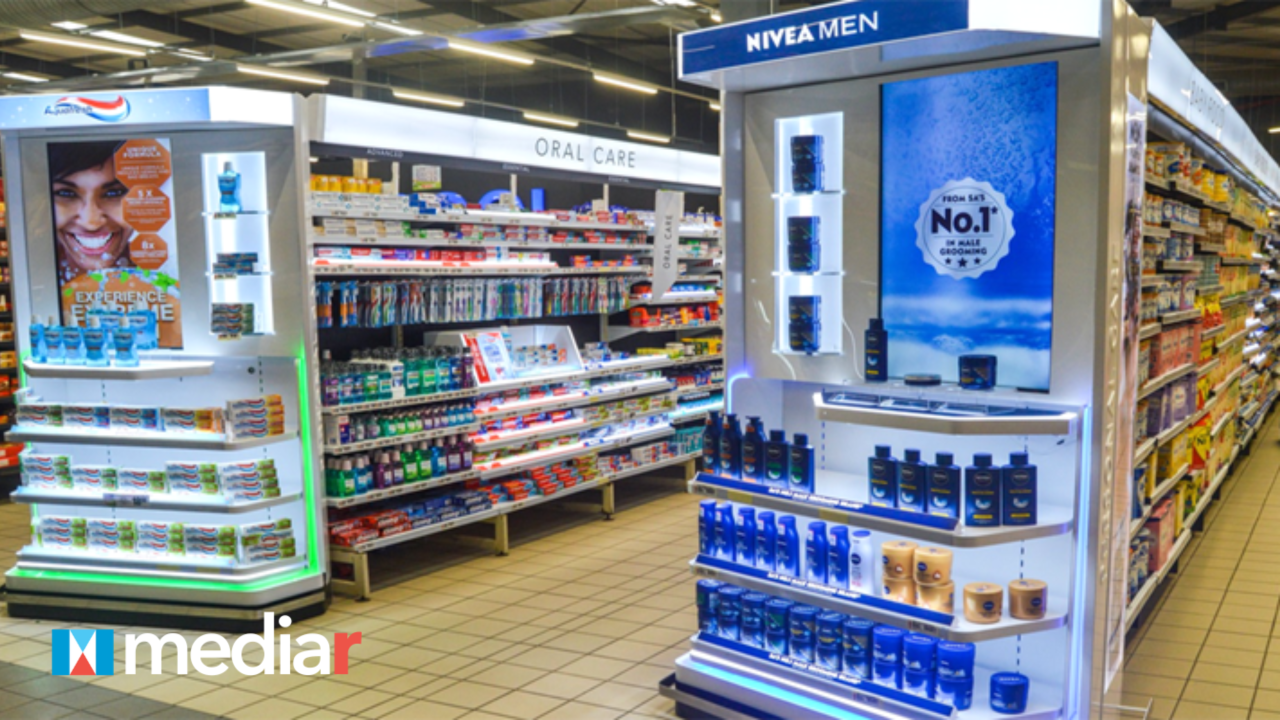
Distraction Can Boost Attention: New Research Validates In-Store Retail Media
At Mediar, we’ve long argued that real-world environments—like stores—are full of overlooked attention. With digital signage, smart shelving, and video-enabled store infrastructure, the store itself becomes a screen. And new research shows that in media-rich, real-life settings, consumers may be more receptive to the right ad interruptions than we think.
A soon-to-be-published paper in MIS Quarterly challenges decades of psychology research about dual-task interference (DTI)—the idea that people can’t process more than one thing at a time. In a series of studies simulating real-world distraction (an NFL game on TV, a word puzzle on a phone, and pop-up ads), researchers found that people who were more engaged in one task were also more likely to remember the pop-up ads.
Why? Because when people are focused, their brains can enter a state of automaticity—a kind of mental autopilot. When this happens, even distractions get processed with less effort, especially if they’re relevant and well-timed.
For retail media, this opens up a new frontier. Our biggest takeaways:
💡 Distraction doesn’t always divide attention—it can multiply it.
In lifelike settings, tasks that share space and context can reinforce one another. That’s why in-store digital screens near the point of decision—shelf edges, freezer doors, end caps—are so powerful. If a shopper is actively browsing or making a choice, a smart interruption (like a targeted message or promotion) can break through in a meaningful way.
🎯 The right ad, in the right place, at the right moment—wins.
When ads matched the environment (e.g., football-themed ads during an NFL game), recall jumped by 29.9%. Timing mattered too: messages delivered during less intense moments—replays, commentary, or transition periods—were up to 16% more memorable.
It’s not just what you say—it’s when and where you say it. That’s why Mediar’s platform prioritizes shopper context: foot traffic heatmaps, dwell time, and even conversion funnel insights help us serve the right message when the shopper is primed to notice.
🔁 Repetition (done right) builds recall—even in distraction.
Unlike the old belief that repeated exposure causes ad fatigue, the study found that recall improved with repetition, especially when ads were consistent and well-placed. In-store retail media can do this organically: a shopper might encounter the same brand message on a floor display, then again on a screen at checkout, reinforcing memory and impact.
🧠 Closer is better: Proximity drives performance.
The study also found that ads shown on the same screen as the main task performed better—11.4% higher recall—than those on separate devices. In retail, this reinforces the power of low-distance environments: places where media and shopper action intersect. Think: screen on a cooler door right where the product is stocked.
So, what does this mean for brands and retailers?
In-store, contextually-relevant advertising isn’t just about visibility—it’s about fit. The best ads don’t interrupt—they integrate. They ride the wave of shopper engagement instead of fighting it.
At Mediar, we’re helping retailers and CPGs harness this insight. Our tools identify high-attention zones in-store, match media messages to shopper behavior, and measure results with precision. Because in a world full of noise, your message doesn’t have to shout—it just needs to show up at the right time.
Curious how Mediar can help your brand cut through the noise—in store? Let’s talk.








